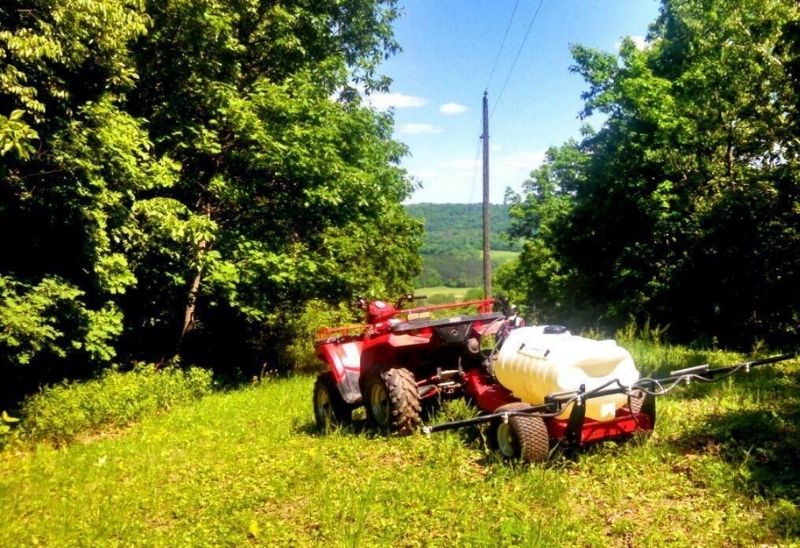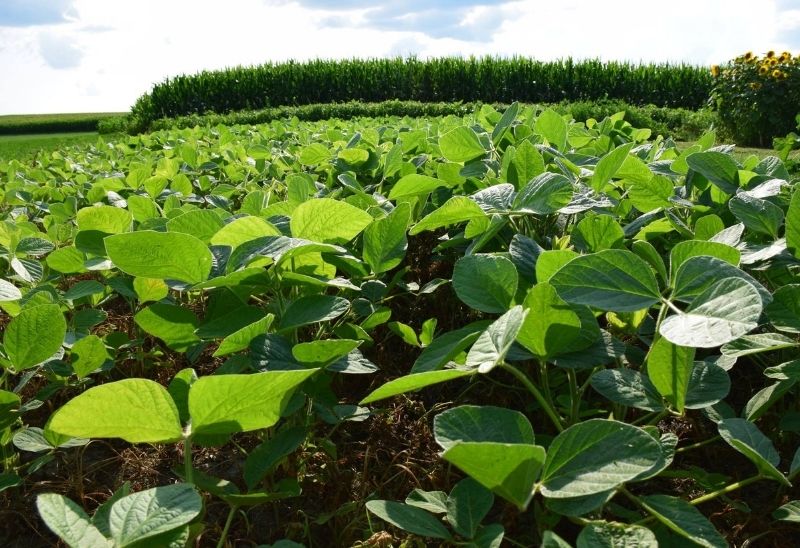Weeds separate the sheep from the goats in food plot management. Recurring weeds can be a frustrating plague for an inattentive grower or what causes another to throw in the towel. For many growers, weeds are the most challenging part of food plots to manage. But with a little background, some careful label-reading, and well-timed action, you'll be set up for success.
What’s A Weed?
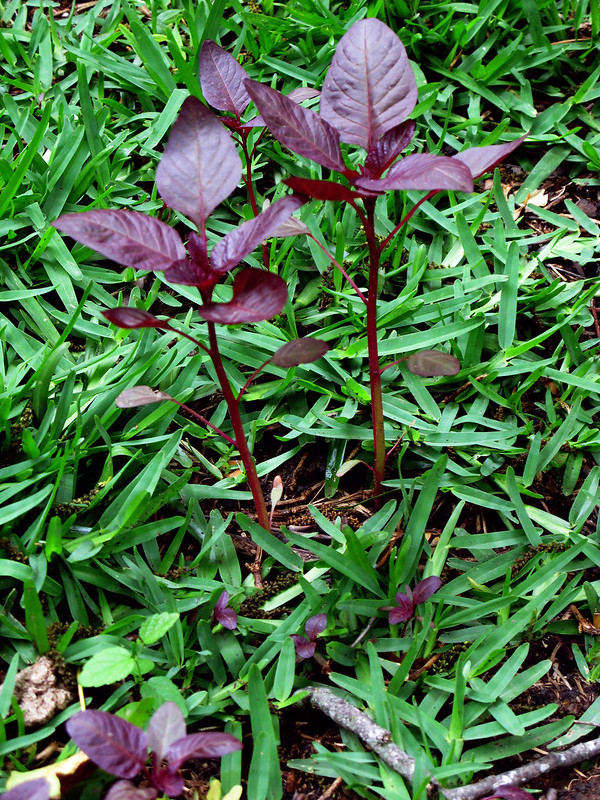 It seems an obvious question for noxious things like horse nettle or thistles, but what about clover in your brassica patch? Or reseeded buckwheat in your soybeans? It may not be your intended crop, but does it serve your purposes or does it require control? Everyone’s answer may be different. If your goal is a pure brassica hunting plot, your approach will be quite different from that of someone managing a mixed-species feeding plot.
It seems an obvious question for noxious things like horse nettle or thistles, but what about clover in your brassica patch? Or reseeded buckwheat in your soybeans? It may not be your intended crop, but does it serve your purposes or does it require control? Everyone’s answer may be different. If your goal is a pure brassica hunting plot, your approach will be quite different from that of someone managing a mixed-species feeding plot.
Also, define what a weed ‘problem’ is for you. Everyone has different thresholds that trigger management actions. If you take the time to plant a food plot, you obviously want the greatest forage production you can obtain, but at what cost? Major weed infestations or particularly invasive noxious weeds are a problem and warrant direct attention (better yet, prevention!). But lightly scattered weeds should elicit a different response (if any). We’re balancing costs and benefits and always being mindful that environmental impact is one of those variables.
We should also accept the fact that there will always be weed seeds in the soil, many of which can lie dormant (but viable) for decades. They are there. Keep them hidden. For the most part, we don't so much eliminate weeds as we try not to activate them. Knowing that weed seeds lurk below the soil line should incentivize you to avoid deep tillage, which unearths and unleashes these problems. Let sleeping weed seeds lie!
 Palmer amaranth is a warm-season weed. Photo courtesy of the University of Delaware on Flickr.
Palmer amaranth is a warm-season weed. Photo courtesy of the University of Delaware on Flickr.
Weed Identification Is A Power Tool
Learning to identify weeds correctly is one of your most powerful weed management tools. Familiarize yourself with the common weeds in your area. County Extension guides or workshops are great resources. But sometimes things look different in the field than in a book.
Luckily, there’s help. Besides many field guides, there are now glorious internet databases and phone apps that can help you quickly and accurately identify unfamiliar plants. Be sure you can distinguish between weed seedlings and your crop seedlings. Once you classify a weed, you can uncover its lifecycle and intrinsic weaknesses to manage it effectively—no more guessing.
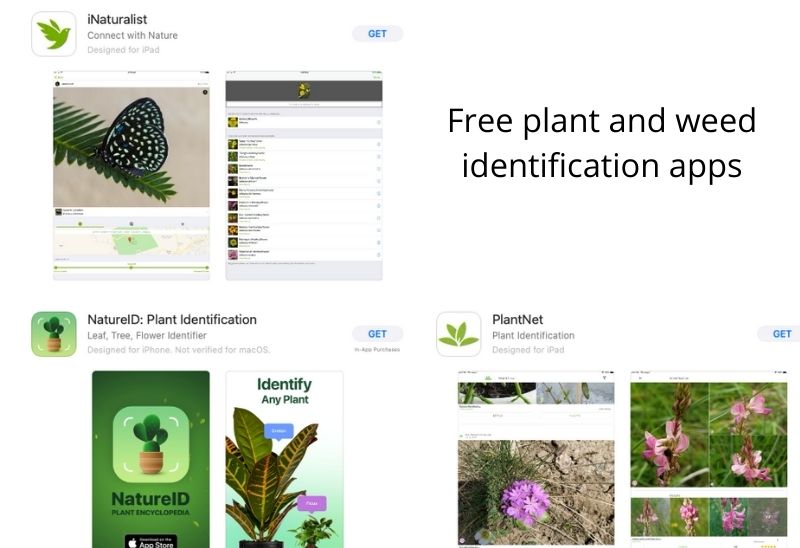 A variety of free plant identification apps are available.
A variety of free plant identification apps are available.
Weed Management Strategies
Most growers equate weed control with spraying chemical herbicides, but other practices are equally (if not more) effective and should be combined for maximum effect. Let’s take a look at a variety of strategies you can use to make weed management less of a chore.
1.) Crop planning: If warm-season weeds are your nemesis, don't try competing with them to start. Consider planting an annual cool-season crop to avoid the initial battle. Without a co-planted crop in the summer, you'll be free to take more definitive control. Alternatively, if you see primarily broadleaf weeds in your plots, consider planting grasses so you can apply a selective herbicide to bring those broadleaf species under control.
2.) Soil fertility: Soil with a neutral pH is less prone to weed outbreaks, often because your cultivated crop is healthier. Have you noticed that managing soil pH has implications in every aspect of food plot growing and deer nutrition? It’s that important.
Over-fertilization and improper fertilizer timing can be a weed accelerator too. Nitrogen in particular is not a ‘more the merrier’ additive. Apply the recommended amounts (from your soil test) at the appropriate times, which is not at seeding! Don’t create your own weed problems. Revisit our Food Plots for Pros article 1 on soil management for details.
3.) Genetics: Use herbicide-resistant crop varieties that allow you to treat emerging weeds without damaging your primary crop. Soybeans are a typical example. Planting a resistant crop initially and then minimizing (or eliminating tillage) can be a way to get a leg up on your weed population.
4.) Mechanical: Methods such as mowing, disking, or cultivating can also interrupt weed growth. Mowing is a standard method for weed management in perennial forages like clover. But keep in mind that mowing doesn't necessarily eliminate weeds, especially perennial weeds. Mowing can prevent annual weeds from reproducing and setting future seeds, but it does nothing more than keep creeping weeds short.
Disking is another common mechanical practice. It breaks up soil clods and can terminate tender annual weeds when preparing a seedbed. Again, disking alone does not eliminate perennial weeds - in some cases, you are multiplying and distributing the weed population! Most perennial weeds require herbicide control. Use the proper herbicide and spray them at the appropriate time, or they will be back.
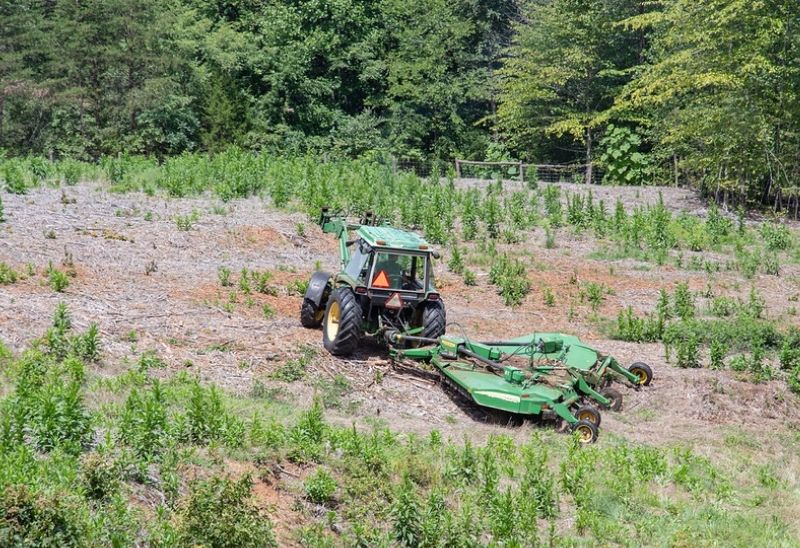 Photo courtesy of Mark Levisay on Flickr.
Photo courtesy of Mark Levisay on Flickr.
5.) Chemical: There are two primary types of herbicides used for weed control in food plots: broad-spectrum and selective, and a hybrid, selective broadspectrum just to keep things interesting.
Full broad-spectrum herbicides do not discriminate. They kill all plants they touch even by accident, so mix them carefully and away from desirable plants (not in the field). Glyphosate (RoundUp) is the ubiquitous product.
We tend to think of glyphosate as the nuclear option, our fail-safe easy-button for weed control. But glyphosate resistance is becoming troublingly common in many weeds. Overuse and improper use are the culprits. Choose glyphosate when you need to terminate an entire area (of mixed species) or when selective products fail. Always use it in the proper concentration and under suitable conditions, and only when you need it.
The second main type of herbicide is selective. These chemistries generally only affect certain classes of weeds: broadleaf, grasses, or forbs. Selective control is handy, for example, when your primary weed is a grass in a broadleaf brassica crop. Use selective herbicides as your first line of postemergence defense when you have correctly identified the target weed species. See the importance of weed identification?
Selective broadspectrum herbicides control both grassy and broadleaf weeds but are only tolerated by some crops. It sounds like the Goldilocks product until you spray it on the wrong crop and lose the whole thing. Get your glasses and do the label reading! This class of weed killers can be very useful if you know what weeds you are battling and have planned your forage crop wisely. It’s advisable to consider single-species plantings as opposed to diverse crop mixes if you need to use a selective broadspectrum product. This will limit your variables, give you more product choices, and avoid killing part of a crop you just planted.
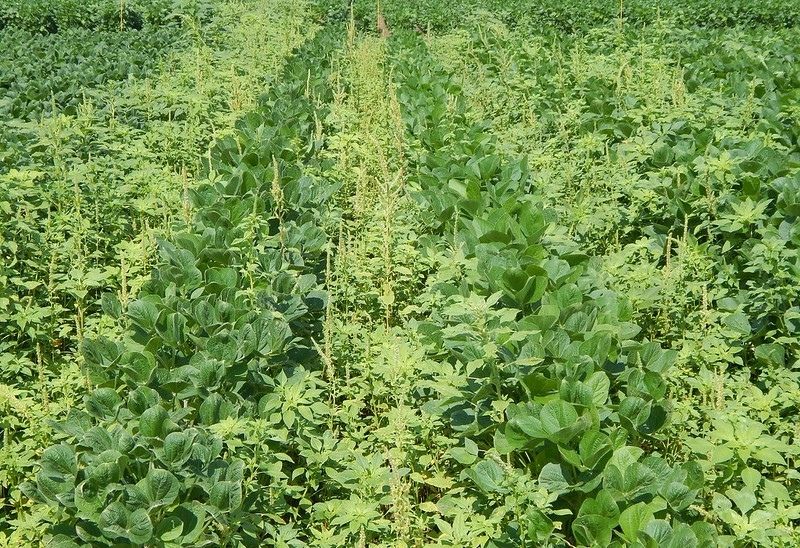 Pigweed in soybeans. Photo courtesy of the United Soybean Board on Flickr.
Pigweed in soybeans. Photo courtesy of the United Soybean Board on Flickr.
Herbicide Considerations
Depending on the chemical and its mode of action, there are three herbicide application timings: postemergence, preemergence, and preplant.
Postemergence applications are what most people think of as an herbicide - a liquid sprayed onto the leaves of the offending plant. These herbicides inhibit photosynthesis or other critical plant functions that kill the plant within a matter of days.
Preemergence herbicides are granules or liquids applied to the soil that forms a protective growth layer killing any germinating seed. These are especially helpful in perennial plots or established crops. If you are using a preemergence at seeding, read and reread your label to ensure that the product and your crop species are compatible!
Preplant herbicides are soil-sprayed before planting and are then incorporated into the soil, usually by disking. These are generally selective herbicides so as not to inhibit the germination of your desired crop.
The Label Is Your Friend
1) Always read the chemical label thoroughly. Manufacturers provide crucial information regarding safety hazards, mix concentration, rate of application, and potential carry-over impact on future plantings. If the attached container label has deteriorated or disappeared, go online and print a copy for your files. (You have food plot files, right?). Then you’ll always have ready access to accurate information.
2)  Reread the label. Notice a theme here? There may be crop-rotation restrictions regarding preemergence and preplant herbicides. Some of these herbicides may stay active in the soil for a few months or more. This long-term impact is an important reason to keep notes on what you apply and when. For example, imazethapyr is the active ingredient in Pursuit. It can stay active in soil many months after planting! When you read the Pursuit label, you'll see that it advises avoiding planting alfalfa, clovers, rye, or wheat for four months after applying Pursuit.
Reread the label. Notice a theme here? There may be crop-rotation restrictions regarding preemergence and preplant herbicides. Some of these herbicides may stay active in the soil for a few months or more. This long-term impact is an important reason to keep notes on what you apply and when. For example, imazethapyr is the active ingredient in Pursuit. It can stay active in soil many months after planting! When you read the Pursuit label, you'll see that it advises avoiding planting alfalfa, clovers, rye, or wheat for four months after applying Pursuit.
3) Check the weather. Because postemergence herbicides work on leaf contact, they have a "rain-fast" time. The chemical can be diluted or washed off and become less effective if it rains shortly after application. Read the label to determine the rain-fast time for the herbicide you are using, then double-check the forecast before you apply.
4) Stick to it. Most postemergence herbicides benefit from a surfactant to be more effective. A surfactant is an additive that helps the herbicide stick to, penetrate and disperse on the plant's leaves. (It's why washing with soap and water cleans your hands better than water alone.) Some postemergence herbicides include a surfactant. Read your herbicide's label to see if it benefits from a surfactant and if one must be added.
A Sample Start-Up Plan
Let's follow an example of weed control strategies for establishing a new food plot.
Breaking New Ground
Glyphosate (postemergence) is helpful in killing existing vegetation before soil prep and planting. Because concentrations vary by product, read your label for the proper mixing rates of the product you use. We recommend waiting at least a week after spraying before planting. This delay will allow you to determine if you missed any areas that need re-treatment before planting.
If the resulting dead weeds are too thick, they may inhibit seeding. Allow additional time for the residue to wilt down and start decomposing before planting. Leave yourself enough time to adequately control the surface weed population. You'll thank yourself later.
Planting
After the initial vegetation kill, you may want to consider a preemergence or preplant application. Always be sure to read the label to assess if your chosen herbicide is safe to use with your selected crop. You don't want to inhibit your crop seed! If you are disking in seed, double-check the recommended seed planting depth. Deeper tillage unearths weed seeds, so only go as deep as the seed requires.
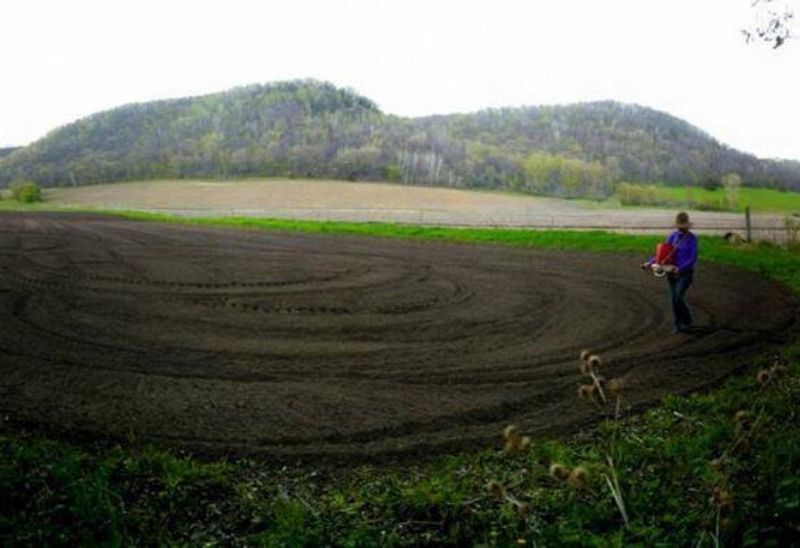
Management
Now that you have planted, you may notice weeds are coming up alongside your crop. If there are just a few sprouts, hand-pull or wait it out to see if the crop will outcompete the invaders. But if the weeds are plentiful, you can return with a selective postemergence herbicide to knock them back. Reread the label! Be sure you are using the correct herbicide for the crop you have planted and applying it at the indicated time.
Postemergence applications are most effective when weeds are young and short. After the weeds grow above 5-6 inches in height, most herbicides are less effective. Timing is critical for proper chemical weed control!
Annual vs Perennial Plots
We recommend planting both annual and perennial food plots, but the approaches to weed management differ. Annual food plots facilitate weed management on tough-to-control weed populations because they allow you to use various herbicides once the plot crop has finished.
But if you're planning a perennial plot, make it a goal to tame your biggest weed issues before you plant perennial forages. This control will give these slower-starting but longer-lasting crops a fighting chance to get established. There are effective herbicides to help maintain perennial plots. Plan to spray them at least twice a year (usually more), and mow at least twice per year for ongoing control. Planning and treating at the correct time with the correct product is the route to success.
Weed management is an ongoing competition to outsmart and outwit an opponent that has evolution on its side. Chemicals are a powerful asset, but use them wisely to retain their potency. This is a time when an ounce of prevention is worth a pound of cure. Take time to plan your crop selection and rotation to allow you the most flexibility in weed control options. With a solid planting plan and a carefully curated tool shed, your plot will produce the forage buffet of your (deer’s) dreams.
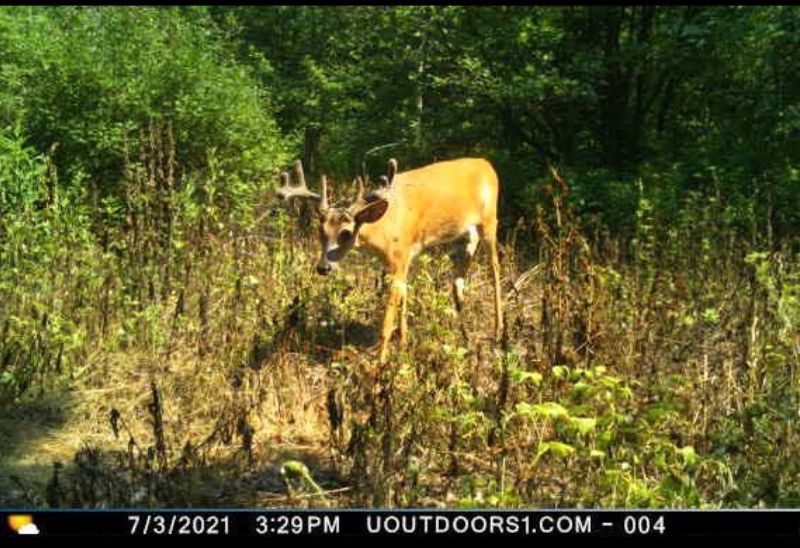 Photo courtesy of Cuddelink J IR/U Outdoors on Deer Creek Seed’s Facebook page
Photo courtesy of Cuddelink J IR/U Outdoors on Deer Creek Seed’s Facebook page
Additional Resources
- The NDA (formerly QDMA) publication Quality Whitetails magazine has an excellent overview of food plot weed management and seed mixes written by University of Tennesee Extension Specialists.
Common Herbicide Labels
Clover and Alfalfa
For grasses
- Select http://www.cdms.net/LDat/ld837005.pdf
- Arrow http://www.keystonepestsolutions.com/labels/Arrow_2EC.pdf
For broadleaves (read closely)
- Brox http://www.cdms.net/ldat/ld49M003.pdf
- Pursuit http://www.cdms.net/ldat/ld00h006.pdf
- Thunder http://www.cdms.net/ldat/mp89O000.pdf
Soybean or Soybean Blends
- Pursuit http://www.cdms.net/ldat/ld00h006.pdf
- Thunder http://www.cdms.net/ldat/mp89O000.pdf
- ME-TOO-LACHLOR http://www.keystonepestsolutions.com/labels/Me_Too_Lachlor_II.pdf
- Prowl h20 http://www.cdms.net/ldat/ld867008.pdf
Corn
- Parallel http://www.cdms.net/ldat/ld6SS007.pdf
- ME-TOO-LACHLOR http://www.keystonepestsolutions.com/labels/Me_Too_Lachlor_II.pdf
- Dual Magnum http://www.syngentacropprotection.com/current-label/dual%20magnum
- Primero http://www.keystonepestsolutions.com/labels/Primero.pdf
- Capreno https://www.cropscience.bayer.us/products/herbicides/capreno/label-msds



